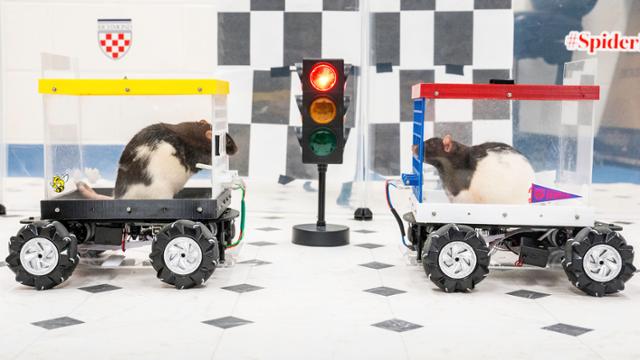Neuroscience
Fast learners
UR’s driving rats took a star turn on the Netflix series The Hidden Lives of Pets in summer 2022. The show included a five-minute segment on them in its “Intelligence” episode, which looks at how “animal intelligence can get a big boost in the right environment.”
UR’s Kelly Lambert, professor of behavioral neuroscience, and her student lab assistants showed off the talents of Sophia and Aletheia, two rats who have excelled at learning to drive small cars in exchange for food rewards.
“I don’t care what kind of mood you’re in,” Lambert said. “When you see a rat driving a car, it’s almost like seeing a pig fly or something. People laugh.”
Amusement is not her purpose. She and her students are teaching rats to drive as part of a larger study on how positive experiences and active environments shape the brain. Some of the rats live in a standard laboratory environment, but others live in what she calls an enriched environment, with more opportunities for social interaction and more objects to play with — “almost like a rat Disneyland,” she says.
“Being in that enriched environment seems to prepare the animals to learn new tasks,” she said.
These studies have direct implications for the broader mental health crisis plaguing Americans today.
“What determines whether or not you see a glass as half-empty or half-full?” Lambert said. “You’re looking at the same thing, so what is it about brains and people and histories and coping skills that brings you to that point? We’re interested in the life events that bring a person to optimistic or pessimistic interpretations of the same situations.”
When you see a rat driving a car, it’s almost like seeing a pig fly.
